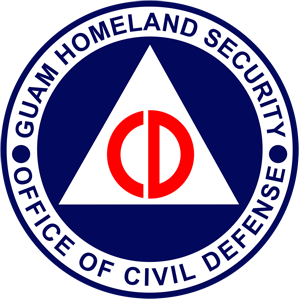What is Mitigation?
Mitigation is the effort to reduce loss of life and property by lessening the impact of disasters. This is achieved through risk analysis, which results in information that provides a foundation for mitigation activities that reduce risk, and flood insurance that protects financial investment. Hazard mitigation is sustained action taken to reduce or eliminate long-term risk to people and their property from hazards.
FEMA’s Federal Insurance and Mitigation Administration (FIMA) manages the National Flood Insurance Program (NFIP) and implements a variety of programs authorized by Congress to reduce losses that may result from natural disasters. Effective Mitigation efforts can break the cycle of disaster damage, reconstruction, and repeated damage.
Mitigation -- A Customer Experience Toolkit Video
Mitigation’s Value to Society
Mitigation is valuable to society in these ways:
- It creates safer communities by reducing loss of life and property damage. For example, the rigorous building standards adopted by 20,000 communities across the country are saving the nation more than $1.1 billion a year in prevented flood damages.
- It allows individuals to minimize post-flood disaster disruptions and recover more rapidly. For example, homes built to NFIP standards incur less damage from floods. And when floods do cause damages, flood insurance protects the homeowner’s investment, as it did for the more than 200,000 Gulf Coast residents who received more than $23 billion in payments following the 2005 hurricanes.
- It lessens the financial impact on individuals, communities, and society as a whole. For example, a recent study by the Multi-hazard Mitigation Council shows that each dollar spent on mitigation saves society an average of four dollars.
Risk Analysis
Government agencies must understand the full impact of natural hazards using applied multi-hazard engineering science and advanced technology in order to effectively plan to reduce natural hazard effects.
Hazard Mitigation Planning
Mitigation Plans form the foundation for a community's long-term strategy to reduce disaster losses and break the cycle of disaster damage, reconstruction, and repeated damage. The planning process is as important as the plan itself. It creates a framework for risk-based decision making to reduce damages to lives, property, and the economy from future disasters. State, Indian Tribal, and local governments are required to develop a hazard mitigation plan as a condition for receiving certain types of non-emergency disaster assistance.
Risk Reduction
The goal of risk reduction is to reduce the risk to life and property, which includes existing structures and future construction, in the pre and post-disaster environments. This is achieved through regulations, local ordinances, land use and building practices, and Mitigation projects that reduce or eliminate long-term risk from hazards and their effects.
A Joint Information Center (JIC) is a central location that facilitates operation of the Joint Information System. The JIC is a location where personnel with public information responsibilities perform critical emergency information functions, crisis communications, and public affairs functions. JICs may be established at various levels of government or at incident sites, or can be components of Multiagency Coordination Systems. A single JIC location is preferable, but the system is flexible and adaptable enough to accommodate virtual or multiple JIC locations, as required.
Hazard Mitigation Assistance (HMA)
The Federal Insurance and Mitigation Administration (FIMA) works with many partners at the Federal, State, and local level to facilitate efforts towards achieving resilience from natural hazards. The FIMA works to reduce risk to life and property damage through a variety of grant programs.
Mitigation seeks to break out of the cycle of disaster damage, reconstruction, and repeated damage. Mitigating vulnerabilities reduces both the direct consequences and the response and recovery requirements of disasters.
FEMA Hazard Mitigation Assistance (HMA) programs present a critical opportunity to reduce risk to individuals and property from natural hazards while simultaneously reducing reliance on Federal disaster funds.
Currently, Guam participates in the following HMA grant programs:
Hazard Mitigation Grant Program (HMGP)
The Hazard Mitigation Grant Program (HMGP) provides grants to States and local governments to implement long-term hazard mitigation measures after a major disaster declaration. The purpose of the HMGP is to reduce the loss of life and property due to natural disasters and to enable mitigation measures to be implemented during the immediate recovery from a disaster.
Building Resilient Infrastructure and Communities (BRIC)
Building Resilient Infrastructure and Communities (BRIC) will support states, local communities, tribes and territories as they undertake hazard mitigation projects, reducing the risks they face from disasters and natural hazards.
The BRIC program guiding principles are supporting communities through capability- and capacity-building; encouraging and enabling innovation; promoting partnerships; enabling large projects; maintaining flexibility; and providing consistency.
Visit https://www.fema.gov/grants/mitigation for more information.
For more information, contact Hazard Mitigation Officer
Ronald Obispo at (671) 475-9600 or via email at ronald.obispo@ghs.guam.gov
Visit https://www.fema.gov/grants/mitigation for more information.






